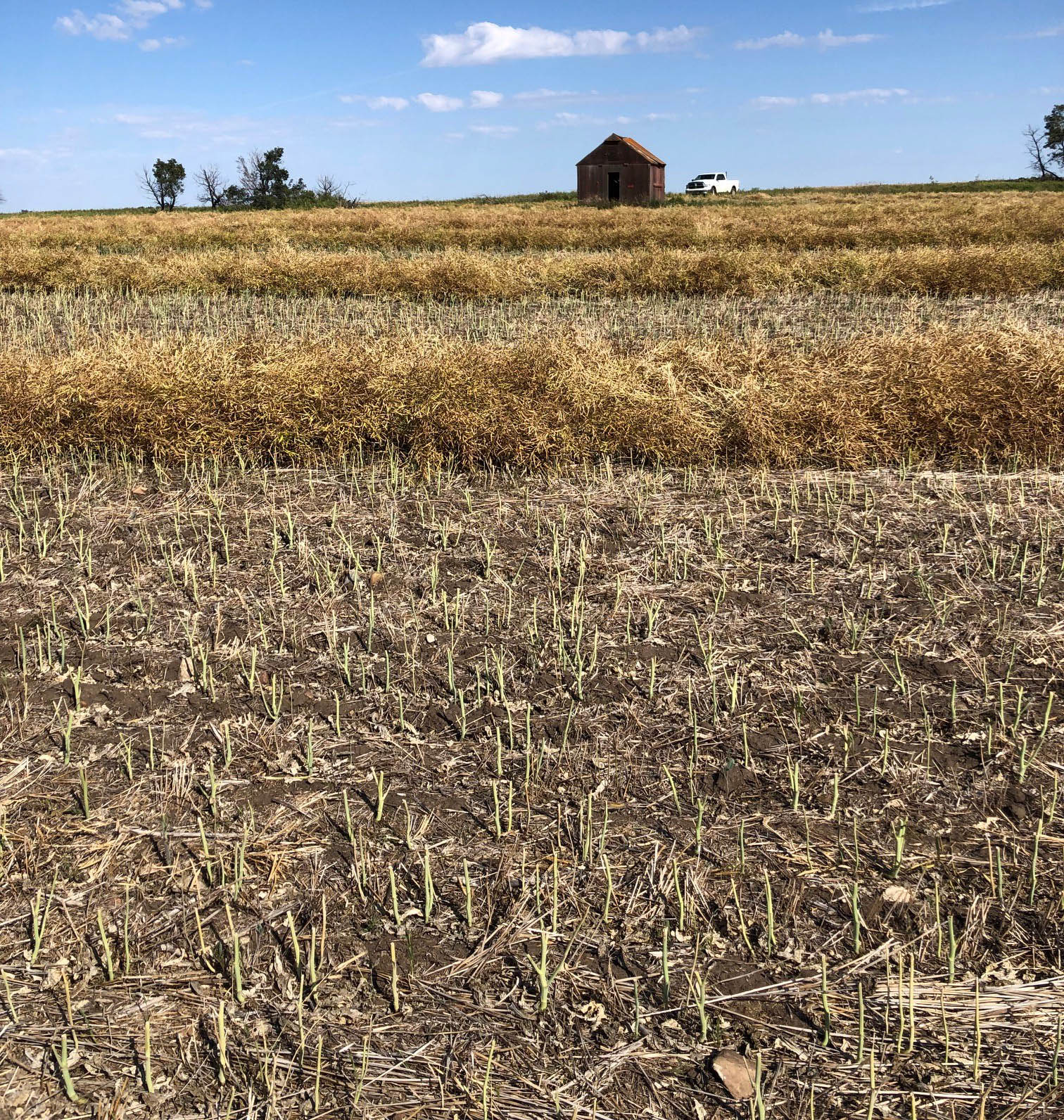 By Harry Brook
By Harry Brook
For years, the simple and effective way to dry down a crop to speed maturity and reduce moisture content in a crop, was to cut it and put it into a swath. Depending on weather conditions, the crop could be dry enough to combine or thresh in a week to 10 days. Maybe longer if it was cool.
Advantages to swathing the crop include some protection from weather events. A heavy, fall snow can leave a standing crop lodged, increasing the difficulty of harvest and slowing harvest speeds. A swathed crop tends to mature fairly evenly. Once moisture in the seed has dropped to 20% or less, then a killing frost will not affect seed quality. Seed inside the swath might even be protected from extreme conditions due to the protection of the straw over it. Weeds dry down pretty quickly and the crop swath feeds nicely into the combine. Risk of any late-season lodging is eliminated. If a crop has to overwinter in the swath, it may overwinter in better shape than a standing crop.
However, there are risks associated with swathing. Wet, rainy conditions can bleach seeds, leading to downgrading. Wet weather into late fall may slow the process of swath drying and a big swath might not dry at all. Or even worse, the seeds may stay wet long enough to start to germinate or even start rooting into the soil, making harvest both difficult and costly. A swathed crop can be slower to combine as there are lumps and possible plugging while feeding into the combine. A swathed crop left out over winter can become infested with mice or other vermin or weather to the point it loses most of its value. Swathing a short or thin crop runs the risk of falling through the stubble onto the ground and becoming impossible to harvest.
The alternative to swathing is to desiccate and straight cut the crop. Or you can let the crop mature on its own. This comes with its own share of positives and negatives. One positive is that straight cutting is less prone to quality loss while standing and dries quickly, when wetted, than in the swath. There is less chance of crop seeds germinating while standing and straight cutting eliminates the slower field activity of swathing. Straight cutting can increase harvest speeds and field efficiencies as you don’t have to put so much straw through the combine. Using a desiccant can increase harvest cost but quality gains from a standing crop can compensate.
Using a desiccant requires warm weather to work. Cool and damp weather after applying it may make it ineffective in quickening crop maturity. A potential disadvantage to straight cutting is the risk of crop shelling out while standing. Strong winds can move the crop canopy around, increasing grain and oilseed loss prior to harvest. An early snowfall while the crop is standing can lead to crop lodging and that can make harvest a slow and painful activity with some of the crop being un-harvestable. Leaving a crop standing over winter is even more risky as cereal heads can break off and canola and peas can shell out.
Desiccation can work to speed crop dry down but it isn’t only the crop that needs drying. Green weeds in the crop also need to be killed to speed up harvest. As some desiccants are contact products, high water volumes are needed to get adequate coverage. Those products that are systemic need the right weather conditions to actively kill the weeds. Then there is the issue of herbicide resistance developing in some of our weeds. Using the wrong product may still result in green weeds in a straight cut crop.
Both swathing and straight cutting can be the best harvest method, depending on current and future weather conditions. Although desiccation and straight cutting is gaining favour, don’t sell the swather. Either way, have a safe and productive harvest.
Harry Brook is Flagstaff County’s Agricultural Fieldman. He can be reached via email at: hbrook@flagstaff.ab.ca or by phone at: 780-384-4138.